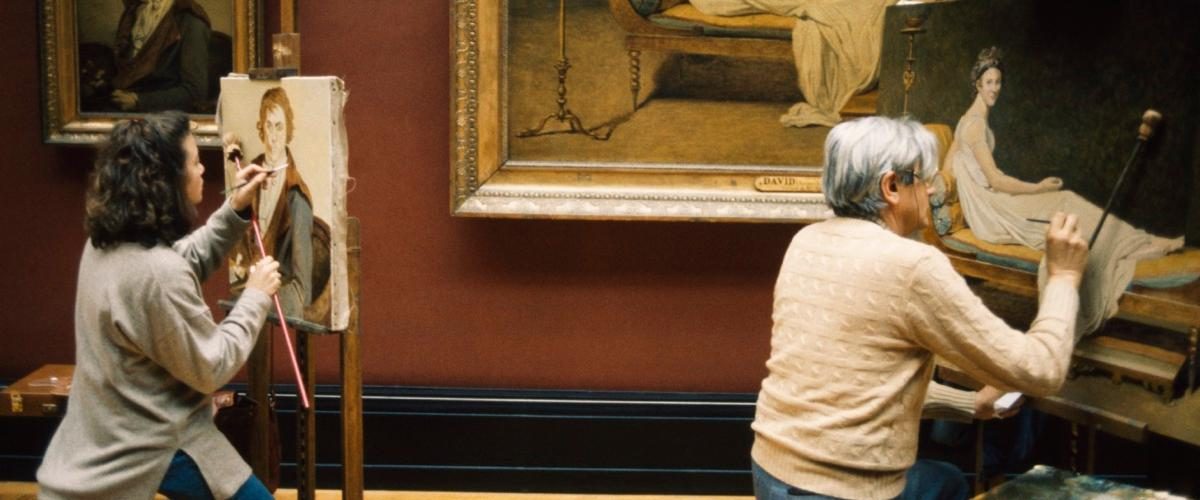Borrow like an artist….it’s not that great getting sued
Many of us may be familiar wit the book Steal Like an Artist by written by Austin Kleon. In this book he describes how countless famous artists have been “stealing” other artists styles, ideas and just about anything else that they deemed valuable and used everything in their own work. But apart from a marketer’s standpoint, should this really be called stealing?
Copyright law is a complex topic that differs from country to country and I am neither a lawyer nor a Mike Ross (smart person with eidetic memory — for anyone, who doesn’t watch Suits), so I surely won’t be fooling myself or anyone by talking about it, but if anyone is interested The Future have a great video on creative copyright (focusing on the US but some things are the same everywhere), where they explore what we creatives can and shouldn’t do with other people’s work.
But I am more than willing and able to offer a sort of anecdote instead: In 2014 an artist know for his tendencies to “appropriate” the works of others (the guy who copied Marlboro’s Cowboy photographs and exhibited them as art), decided to take screenshots of other people’s Instagram accounts and go to town with them. And by town I mean have an exhibition at Gagosian called “New Portraits” and selling these works for around 100.00$ each.
He, of course, was then sued by several people and the lawsuit has been ongoing with a strong possibility that Prince will win his claim, namely that one doesn’t need to change a work of art to make it into a different work of art. One needs only change the context of said work of art and its meaning, message and value change because of it.
I must state beforehand I am a fan of his work intellectually speaking, and that I can’t say my views on what he does are by any means unbiased (though I do not condole stealing of any kind), and I wish to present them as objective as I can. What Richard Prince does is quite unique in the art world; he blatantly yet smartly plays with our understanding of what it means to own and to create a work of art. He is a strong supporter of breaking the status quo and probably (judging from his books) quite a bit of a nihilist deep down. But in the end, he does get one thing:
If I paint an apple tree painting and hang it inside a church or if I take the same painting and hang it on the wall of a cabin inside an orchard, I might have had the same work of art physically, but the entire meaning of this piece changes drastically when it is hung in one place or the other. It isn’t only the work that produces its meaning by itself, it’s the entire space (that’s why white cubes were so popular, and still are, because they take everything that isn’t the art piece away so that only the true meaning of each art piece is presented).
So while Richard may really be taking the literal images of other people’s works and showing them as his own, he technically isn’t stealing the physical objects. The only thing he is taking is the outer shell of the objects (or images) in question. And while I am not defending his actions, it is incredibly interesting where various types of artists see the line between stealing something and borrowing or transforming it (or appropriating as we artists like to soften up the word steal when writing essays).
If I take anything, physical or not (mp3 music and ebooks for example) and use it in the same way it was intended: the context of reading a bought book and a stolen book is roughly the same – both times I read it the same way with the same intent of reading it – the context of listening to a bought album of Metallica and a torrented one is roughly the same – both times I listen to it in the same way, again with the same intent of listening to the tunes.
But if I take the music of Metallica and play it over a humorous scene in a movie (not that anyone would), my intent changes and with it the message and function of let’s say Enter Sandman goes from communicating the scary movie feeling we know and love to creating a weird feeling of satire in combination with, lat’s say people getting pies in their faces. But can Metallica sue me if I used their song in such a way, even if I say that it’s made by Metallica? The music Industry said yes, but funny enough if I take a part of Harry Potter, and I mean word for word, and use it in my book, but I use the appropriate citation and change it’s meaning from telling a story about a wizard, to let’s say a book about peoples imagination, J. K. Rowling can’t sue me.
So while the music example is as clear as day to all of us, it becomes a bit more confusing when talking about books, and it gets even more when talking about Fine Art, yet the principles are the same. Some say you can’t steal other peoples work while others will tell you there is absolutely no stealing going on. But what’s your view on using other people’s work, is it something you do regularly or would you never brake the sacred vows of creative integrity?


One comment
Hi, this is a comment.
To get started with moderating, editing, and deleting comments, please visit the Comments screen in the dashboard.
Commenter avatars come from Gravatar.